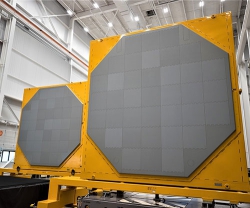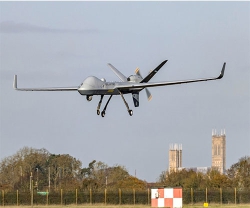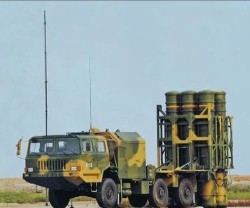The Space and Missile Systems Center’s Production Corps successfully transferred Satellite Control Authority of the Advanced Extremely High Frequency (AEHF) Space Vehicle 6 to Space Operations Command on October 29. Operational Acceptance is expected to occur before the end of the year after operational testing has successfully concluded. The 4th Space Operation Squadron will exercise operational control as the satellite is integrated into the constellation.
SV- 06 successfully launched on March 26 from Cape Canaveral Air Force Station, Florida on an Atlas 551 rocket under strict COVID-19 restrictions. The subsequent orbit raising to a Geo-Stationary orbit and performance testing were completed in August. Testing was conducted from seven locations across the country that involved nine organizations and more than 100 space professionals. This is the last of six AEHF satellites launched and the first launch under the U.S. Space Force.
SV-06 completes the Milstar/AEHF constellation. The constellation system provides critical Nuclear Communications, Command and Control capabilities for national decision makers and warfighters in support of the country’s national security posture. The system provides global, assured, protected, jam-resistant communications through all conditions to include nuclear confrontation.
The U.S Space Force’s Space and Missile Systems Center, located at the Los Angeles Air Force Base, California, is the center of excellence for acquiring and developing military space systems. Its portfolio includes the Global Positioning System, military satellite communications, defense meteorological satellites, space launch and range systems, satellite control networks, space based infrared systems, and space situational awareness capabilities.
“AEHF enables both strategic and tactical users to communicate globally across a high-speed network that delivers protected communications - including real-time video, battlefield maps and targeting data -- in any environment. We are hard at work designing the next generation of resilient protected satcom which including strategic and tactical satellite communications systems and 10 satellites for the first tranche of SDA’s Transport Layer,” said Erik Daehler, Director of Protected Communications, Lockheed Martin Space.
These systems will usher in a new level of networked connectivity that will let our military and allies operate in a joint all domain operations connected battlespace,” he added.
Fast facts on the Advanced Extermely High Frequency (AEHF) system:
- Powerful Technology: Connects the warfighter on ground, sea and air platforms in a contested environment through a protected and jam-proof system that overpowers enemies.
- Extended Data Rate (XDR) waveform technology adds to the constellation’s high-bandwidth network
- A single AEHF satellite provides greater total capacity than the entire legacy five-satellite Milstar constellation it is augmenting and eventually replacing.
- AEHF Ground adds backward compatibility to the legacy system and increased reliability through server virtualization.
- National Security: This robust system enables military users to transmit and receive sensitive data over a survival network through rapidly deployable assets.
- Cost Saves: Lockheed Martin has reduced risk to the customer, improved manufacturing and lowered satellite cost by 35%with its recent block buy. AEHF-5 and -6 are models of acquisition excellence, delivering $1.6 billion in savings to USAF and earning the prestigious David Packard Award for Excellence in Acquisition.
- Evolving Architecture: AEHF-5 and AEHF-6 will support enhancements to future warfighter missions. AEHF ground systems, also built by Lockheed Martin, are a crucial component of the constellation’s success providing backward compatibility and increased reliability.
- International Partnerships: Australia, Canada, the United Kingdom, and the Netherlands are connected to this highly-protected and proven global communications constellation.






















